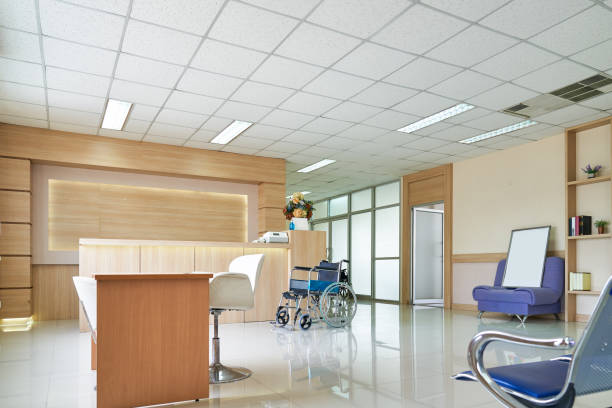Image Source: Google
Medical office spaces play a critical role in delivering quality healthcare services to patients. With the advancement of technology and changes in healthcare practices, it is vital for medical office spaces to evolve and adapt to meet the modern healthcare needs. By transforming and optimizing medical office spaces, healthcare providers can enhance patient care, improve efficiency, and create a more welcoming environment for both patients and staff. If you are looking for medical office space, then you may check Regions Commercial.
The Importance of Transforming Medical Office Spaces
Medical office spaces are more than just physical locations where healthcare providers see patients. They serve as the foundation for delivering quality care and shaping the overall patient experience. By transforming medical office spaces to meet modern healthcare needs, healthcare providers can:
Enhance Patient Care
- Optimize workflow and layout to improve patient flow and reduce wait times.
- Implement technology solutions to enhance communication and coordination among healthcare providers.
- Create designated spaces for telemedicine consultations to expand access to care.
Improve Efficiency
- Streamline administrative processes by implementing digital solutions for appointment scheduling, patient records, and billing.
- Optimize the use of space to reduce overcrowding and enhance staff productivity.
- Integrate smart building technologies for energy efficiency and cost savings.
Key Considerations for Transforming Medical Office Spaces
When transforming medical office spaces for modern healthcare needs, healthcare providers should consider the following key factors:
Technology Integration
- Implement electronic health records (EHR) systems for seamless access to patient information.
- Integrate telemedicine platforms for virtual consultations and remote monitoring.
- Utilize digital signage and wayfinding solutions to improve patient navigation.
Patient-Centered Design
- Create a welcoming and comfortable environment for patients and their families.
- Design patient rooms and waiting areas with privacy and confidentiality in mind.
- Incorporate natural light and green spaces to promote healing and well-being.
Accessibility and Inclusivity
- Ensure compliance with ADA regulations to accommodate patients with disabilities.
- Provide multilingual signage and interpretation services for non-English speaking patients.
- Offer telehealth options for patients with limited mobility or transportation barriers.
Best Practices for Transforming Medical Office Spaces
To successfully transform medical office spaces for modern healthcare needs, healthcare providers can follow these best practices:
Engage Stakeholders
- Involve healthcare providers, staff, and patients in the design and planning process to gather valuable insights and feedback.
- Collaborate with architects, designers, and construction professionals with experience in healthcare design.
- Conduct regular assessments and solicit ongoing feedback to ensure the space meets the needs of all stakeholders.
Stay Flexible and Adaptable
- Design modular and flexible spaces that can easily adapt to changing healthcare needs and technologies.
- Plan for future growth and scalability to accommodate new services and technologies.
- Regularly review and update the space to maintain relevance and functionality.
Prioritize Safety and Infection Control
- Implement rigorous cleaning protocols and infection control measures to ensure a safe and hygienic environment for patients and staff.
- Incorporate touchless technology and sanitation stations to reduce the risk of cross-contamination.
- Design spaces with proper ventilation and airflow to minimize the spread of airborne pathogens.
Conclusion
Transforming medical office spaces for modern healthcare needs is essential for enhancing patient care, improving efficiency, and creating a welcoming environment for all. By integrating technology, adopting patient-centered design principles, and prioritizing accessibility and safety, healthcare providers can unlock the full potential of their medical office spaces and deliver quality care to patients.
